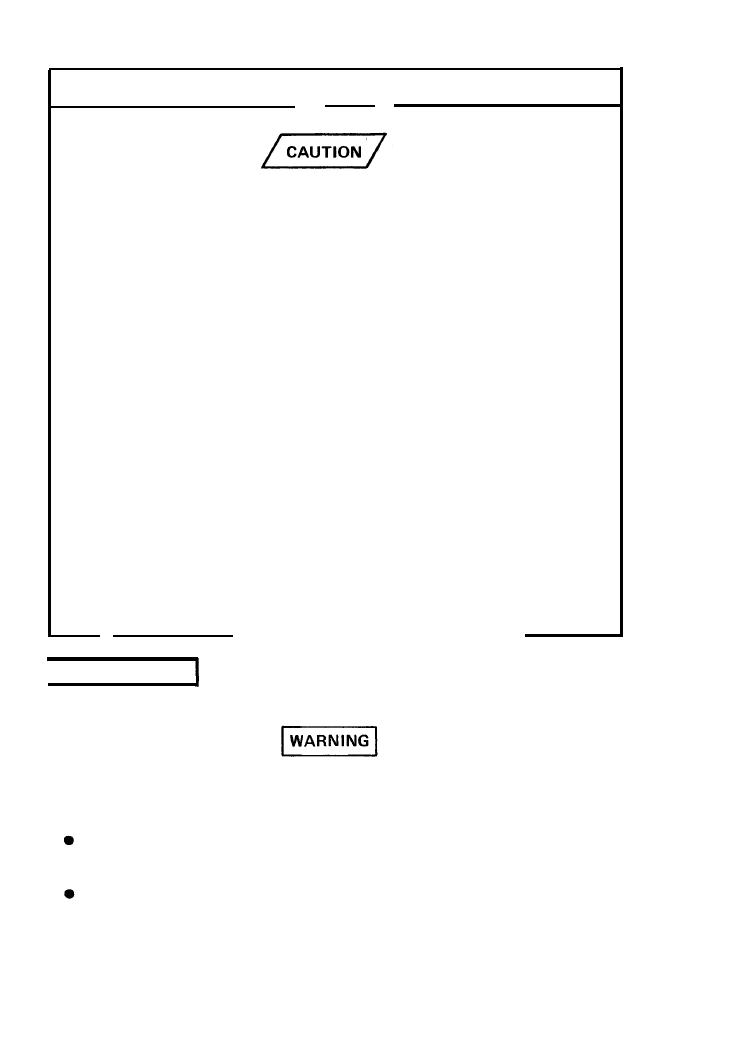 |
|||
|
|
|||
|
Page Title:
Leakage Definitions For Crew/Operator PMCS |
|
||
| ||||||||||
|
|
 TM 9-2320-273-10
Definitions For Crew/Operator PMCS
Leakage
EQUIPMENT OPERATION IS ALLOWABLE WITH MINOR
LEAKAGES (CLASS I OR I l). OF COURSE, CONSIDER-
ATION MUST BE GIVEN TO THE FLUID CAPACITY IN
THE lTEM/SYSTEM BEING CHECKED/lNSPECTED.
WHEN IN DOUBT, NOTIFY YOUR SUPERVISOR.
WHEN OPERATING WITH CLASS I OR II LEAKS,
CONTINUE TO CHECK FLUID LEVELS AS REQUIRED
IN YOUR PMCS.
CLASS Ill LEAKS SHOULD BE REPORTED TO YOUR
SUPERVISOR OR TO ORGANIZATIONAL MAINTENANCE.
CLASS I
Seepage of fluid (as indicated by wetness
or discoloration) not great enough to form
drops.
Leakage of fluid great enough to form
CLASS II
drops but not enough to cause drops to
drip from item being checked/inspected.
CLASS Ill
Leakage of fluid great enough to form
drops that fall from the item being
checked/inspected.
OPENING HOOD
After raising the hood, insert the S shaped safety hook through
two matching holes in the prop channels to prevent the hood
from falling accidentally.
To perform checks or services on components located in the engine compartment, you
will need to raise one or both of the hinged hood panels.
The right-hand hood side can be raised to perform most of all routine maintenance
such as checking or filling the radiator and engine oil. The left-hand side is used
for checking power steering fluid, servicing the fuel filter and filling the alcohol
evaporator reservoir.
|
|
Privacy Statement - Press Release - Copyright Information. - Contact Us |